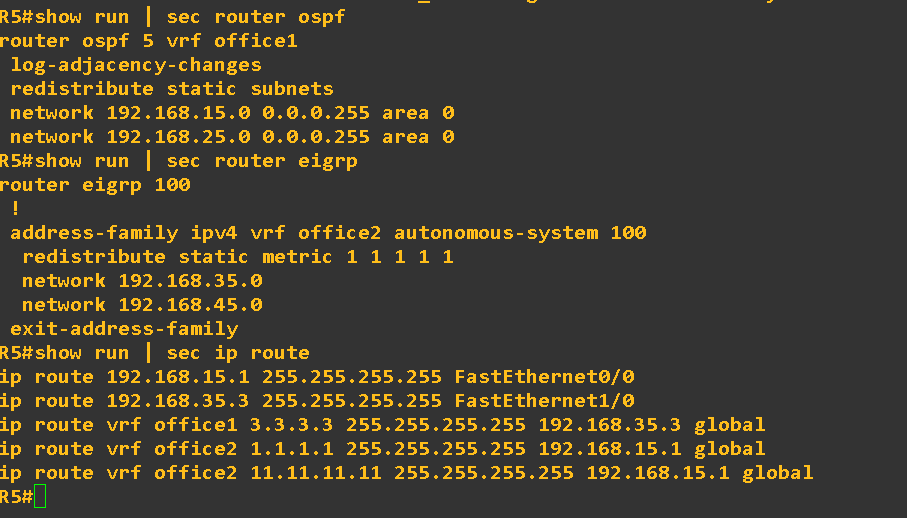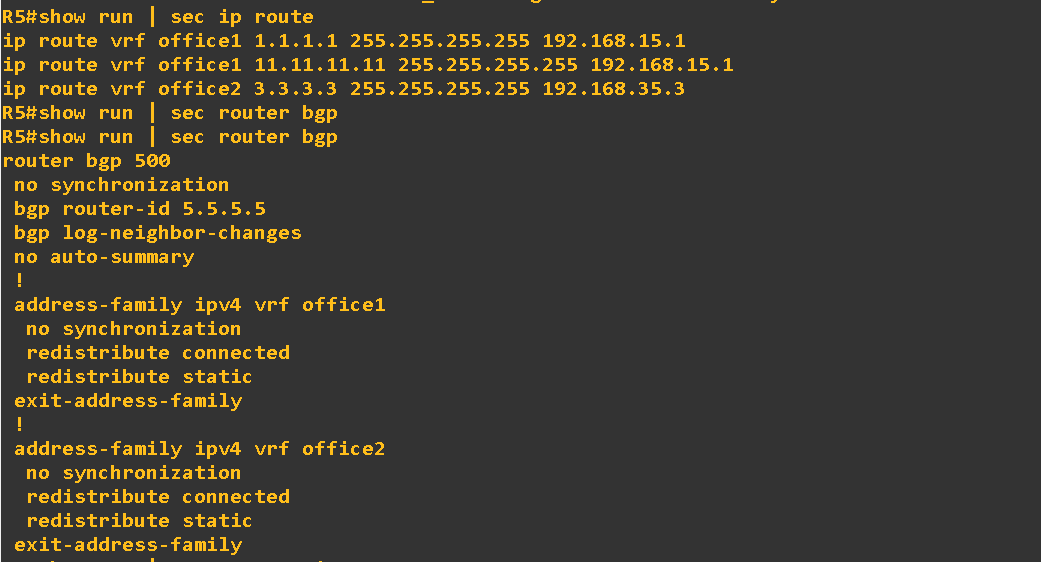Hello Nahro
I decided to lab this one up once again to clarify what is happening. In the first case, when we use static routes to do route leaking, we create a static route for the destination in the other VRF. It is these static routes that point to the global routing table that enable the route leaking.
In the case of using MP-BGP, the actual route leaking takes place using BGP. This means that the routes to the prefixes we want must first exist within the corresponding routing tables of the ISP router. In order to do this, we create static routes within each VRF that point to the desired destinations. For this reason, we have these static routes point to the prefixes in their own VRF.
Now the confusion comes with this statement in the MP-BGP section:
For each VRF, I will create a static route that points to the loopback 0 interface of the other VRF:
It should read:
For each VRF, I will create a static route that points to the loopback 0 interface within that VRF:
(I will let Rene know to make the correction to avoid confusion…)
Otherwise, the configuration in the lesson, as well as in the post linked above is correct. My initial post here was incorrect. So what are the results? Take a look at the routing table of VRF RED in the ISP router:
ISP#show ip route vrf RED
Routing Table: RED
Codes: L - local, C - connected, S - static, R - RIP, M - mobile, B - BGP
D - EIGRP, EX - EIGRP external, O - OSPF, IA - OSPF inter area
N1 - OSPF NSSA external type 1, N2 - OSPF NSSA external type 2
E1 - OSPF external type 1, E2 - OSPF external type 2
i - IS-IS, su - IS-IS summary, L1 - IS-IS level-1, L2 - IS-IS level-2
ia - IS-IS inter area, * - candidate default, U - per-user static route
o - ODR, P - periodic downloaded static route, H - NHRP, l - LISP
a - application route
+ - replicated route, % - next hop override, p - overrides from PfR
Gateway of last resort is not set
1.0.0.0/32 is subnetted, 1 subnets
S 1.1.1.1 [1/0] via 192.168.12.1
3.0.0.0/32 is subnetted, 1 subnets
B 3.3.3.3 [20/0] via 192.168.23.3 (BLUE), 00:36:04
192.168.12.0/24 is variably subnetted, 2 subnets, 2 masks
C 192.168.12.0/24 is directly connected, GigabitEthernet0/1
L 192.168.12.2/32 is directly connected, GigabitEthernet0/1
192.168.23.0/24 is variably subnetted, 2 subnets, 2 masks
B 192.168.23.0/24 is directly connected, 00:36:04, GigabitEthernet0/2
L 192.168.23.2/32 is directly connected, GigabitEthernet0/2
Notice that 1.1.1.1 is learned statically, and 3.3.3.3, which is the leaked route, is learned via BGP. If you look at the BLUE routing table, you will see similarly, that 3.3.3.3 is learned statically, and 1.1.1.1 is learned via BGP.
I hope this has been helpful!
Laz





